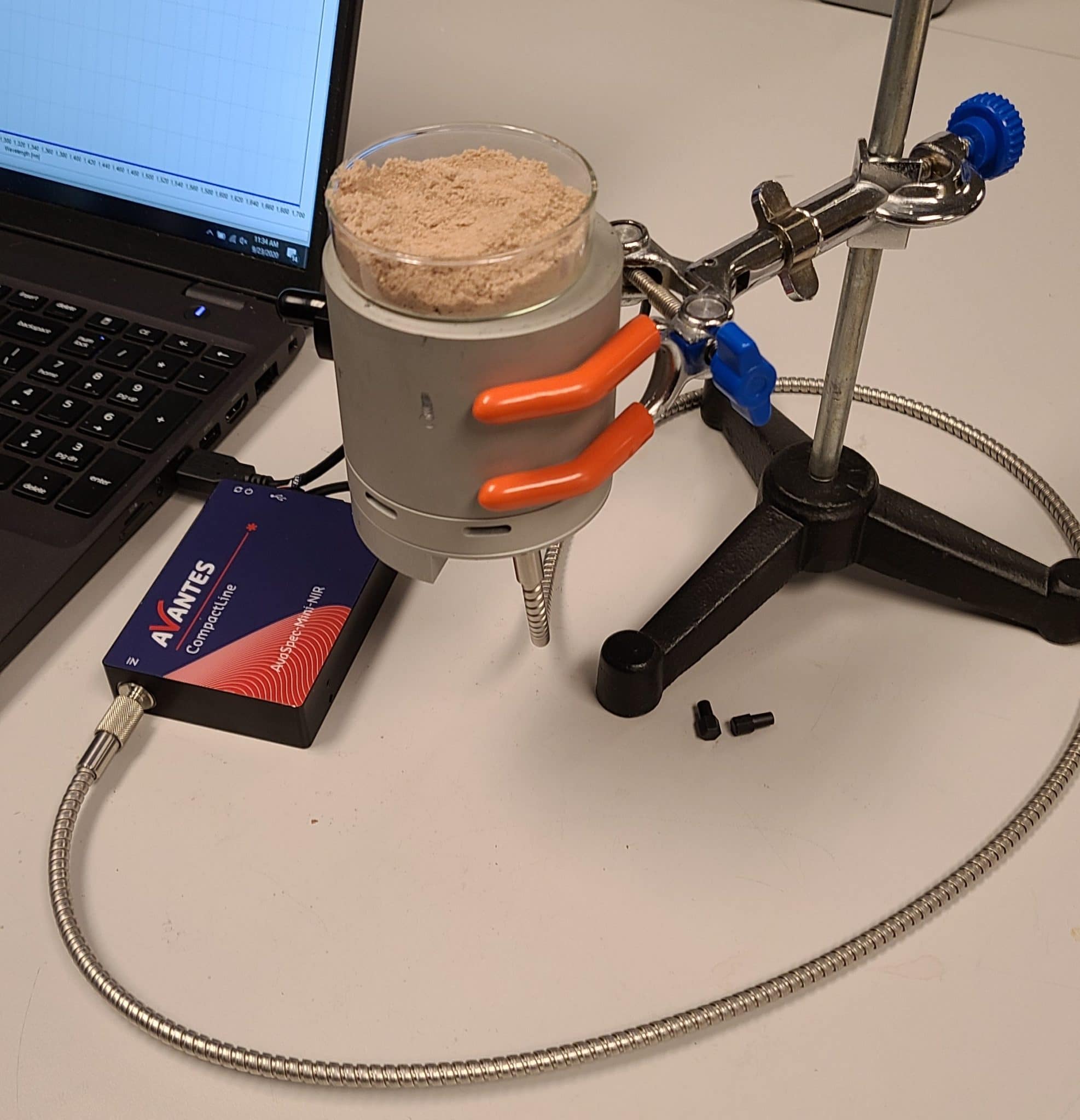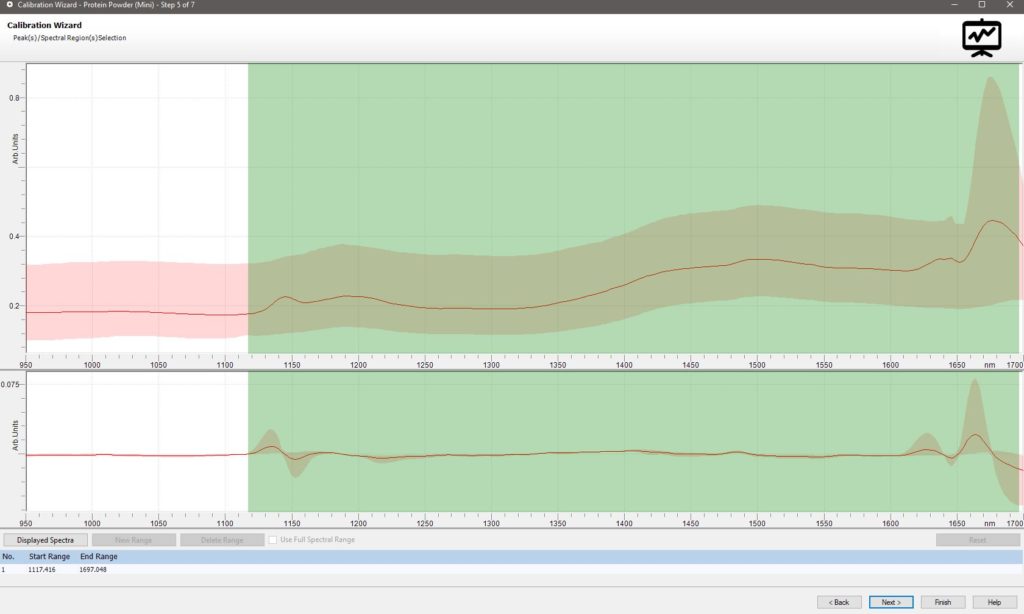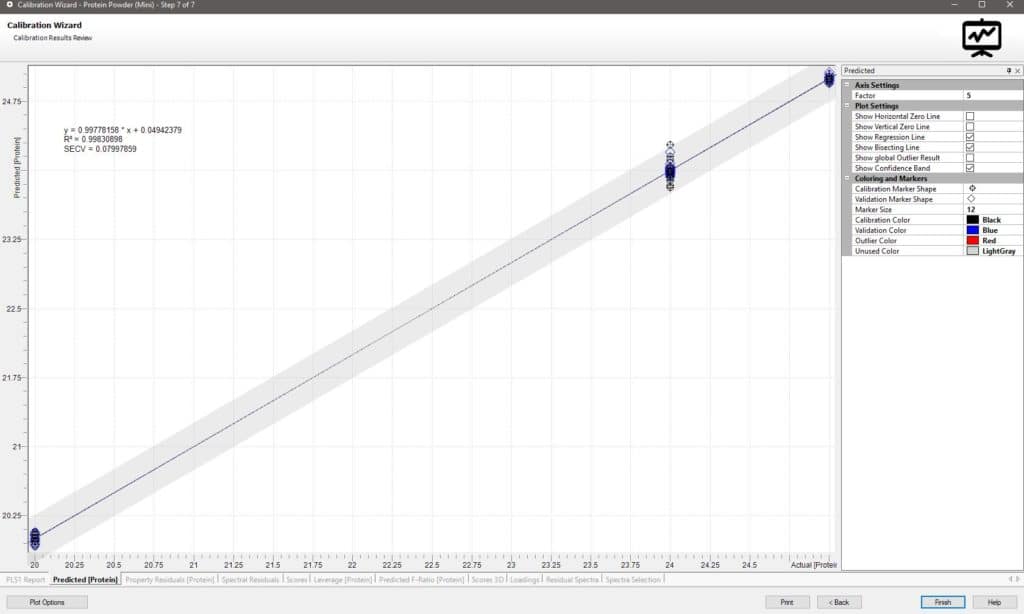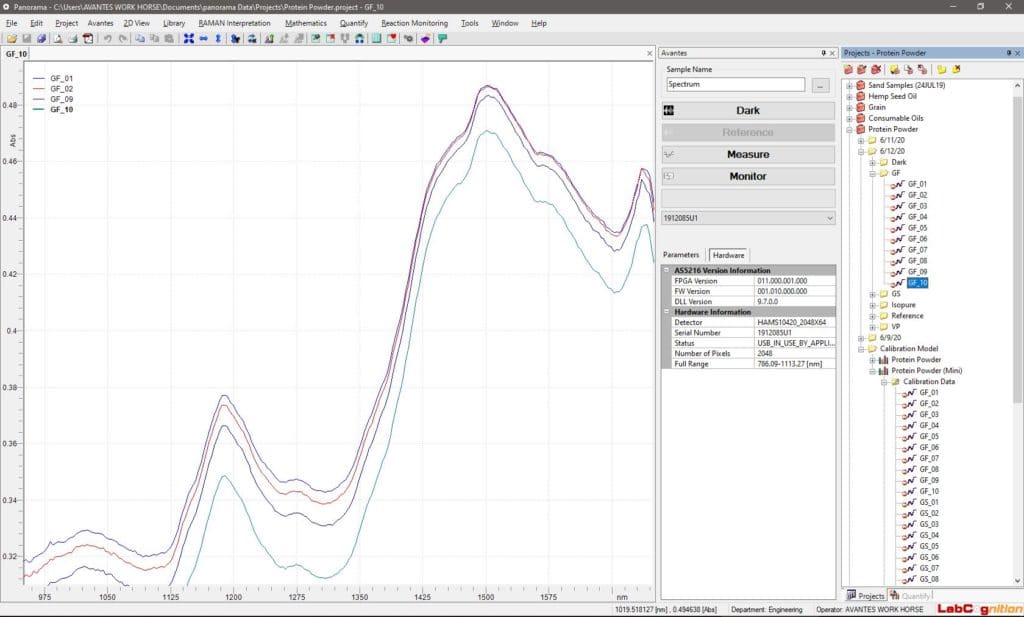Chemometric Model and Absorption of Protein Powder
Absorption measurements can be used to determine the properties of various samples, such as concentrations of chemicals and the quality of plastics. Not only can absorption spectra be used to identify the characteristics of many types of samples, but it can also be used to characterize the unique spectra of each sample to generate a chemometric model.
Conducted by: David Ademe, Avantes Inc.

Figure 1: The setup of the experiment
System Description:
A halogen light source is ideal for absorption measurements because of its power and good output in the NIR range, which is the wavelength range many researchers use in agriculture to study and characterize consumables, such as oils. This aids in revealing properties not observable with the naked eye. The halogen light source used in this testing is the halogen source integrated into the AvaSphere-50-LS-HAL. From visible light to near-infrared, that’s where halogen sources work best. It’s a compact, stabilized halogen light source built into the integrating sphere. The AvaSphere reflection version is used for the measurement of total integrated reflectance of a surface, as well as for color measurements and fluorescence spectroscopy on solids/powders. The principle of measurement is based on direct illumination and indirect reflection. From the sphere, the reflected light is fed into the spectrometer. In this test, it is the AvaSpec-Mini-NIR.
The AvaSpec-Mini-NIR is a compact near-infrared spectrometer, based on a combination of our popular AvaSpec-NIR256-1.7 and Mini-series. This NIR spectrometer might not be as sensitive as our bigger NIR spectrometers, but this loss in sensitivity is greatly compensated by its size and robustness. Like our other CompactLine spectrometers, this device is only the size of a deck of cards and USB powered, which makes it easy to integrate into other devices, including but not limited to OEM handheld applications. This versatile miniature NIR spectrometer is well suited for various applications, including food analysis and the recycling industry. For this testing, the configuration used has a useable range of 950 nm to 1700 nm. It is also fitted with a Slit-50 and an OSF-850.
Methodology – Chemometric Model:
For this experiment, the software Panorama, developed by Labcognition, was utilized. Panorama is a powerful spectroscopic tool capable of fully controlling Avantes instruments to give the user the ability to not only collect and save data but compile this data into a mathematical calibration that is generated through the software. This experiment used various protein powder samples to generate a mathematical model capable of predicting the amount of protein in these samples.
The first step in this process was collecting the absorbance spectra of the samples. To create the model, each sample was measured a total of ten times.
After collecting the spectra for each sample, the amount of protein in grams was entered with its respective sample. The Calibration Wizard in Panorama was then utilized to compile each sample into a mathematical model capable of predicting the amount of protein in each sample. For this calibration, a PLS1 model was used.
Test Data and Results:
The following images show the various steps of the Calibration Wizard.


Conclusion:
In conclusion, the AvaSpec-Mini-NIR high spectrometer combined with the powerful capabilities of Panorama, can produce a highly accurate chemometric model capable of predicting the amount of protein in protein powders. In order to further improve this model, additional samples can be added to the calibration. This model development could be applied to a variety of nutraceuticals products in liquid or powder form with the caveat that sample homogeneity is critical to success with these types of samples.
Get the Downloadable Data Files
 My Cart
My Cart 


